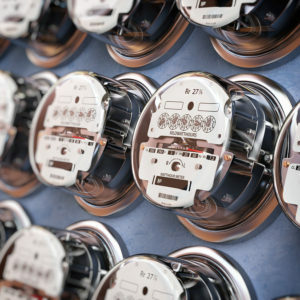The U.S. Supreme Court’s rejection of a request to temporarily block the Biden administration’s rules on carbon emissions has energy industry advocates warning that America may face a growing demand for electricity and less supply to meet it.
At issue are new regulations from the Environmental Protection Agency (EPA) that all sides agree would force many baseload electricity producers using coal or natural gas to either shut down or drive up costs for consumers. The goal is to reduce greenhouse gas emissions from coal and gas power plants by some 90 percent in the 2030s — a goal many energy experts say simply isn’t possible.
A statement from the court written by Justices Brett Kavanaugh and Neil Gorsuch argued that since the compliance actions don’t begin until June, there is no need for emergency action.
“So this Court understandably denies the stay applications for now,” Kavanaugh and Gorsuch wrote, adding “the applicants have shown a strong likelihood of success on the merits as to at least some of their challenges to the Environmental Protection Agency’s rule.”
Michelle Bloodworth, president and CEO of America’s Power, appreciated those statements from the justices. She told InsideSources that America’s Power has long considered the new EPA rules to be an illegal overreach, one that would “undermine the reliability of the electrical grid” in the United States.
“By forcing the premature retirement of coal plants, the EPA would reduce needed sources of electricity at the same time electricity demand is exploding,” Bloodworth said. “Coal-based electricity is essential to ensuring the United States can develop and deploy artificial intelligence and not fall behind other nations like China.”
Craig Stevens, spokesman for the Grow America’s Infrastructure Now (GAIN) Coalition, noted power demands for new data centers to power AI are already putting pressure on electricity demand.
“Our nation needs more power generation to ensure American families can afford to keep their lights on,” Stevens said. “The EPA’s regulation on power plant emissions does the opposite – setting an unrealistic requirement that will inevitably force plants to shut down entirely.”
According to the U.S. Energy Information Administration (EIA), global energy consumption is projected to increase by nearly 50 percent between now and 2050. Few energy industry professionals believe current renewable technologies like wind and solar, which only provide about 20 percent of the U.S. electricity supply, can cover that growth.
“Wind and solar cannot replace natural gas and coal,” says Bloodworth, adding seasonal weather can be a factor in production.
The EPA says the rule is necessary to combat man-made climate change. In 2022, the electric power sector generated about 25 percent of U.S. carbon emissions.
Environmental groups like the rule and applaud the Supreme Court for siding with EPA in this case. Holly Bender, Sierra Club Chief Energy Officer, said these and other EPA safeguards are vital to the mission of cutting greenhouse gas emissions and helping move from fossil fuels toward a clean energy economy.
“As we continue to witness the impacts that coal and gas plant pollution have on our climate and health, we must do everything possible to reduce emissions, mitigate the harm caused by fossil fuel combustion and, ultimately, end this practice altogether,” said Bender.
Ending the use of fossil fuels entirely is a long-stated goal of political progressives, and opponents of the EPA rules say that’s the real motivation behind the regulations — regulations that have never been approved by Congress.
They also point to Vice President Kamala Harris, one of the original sponsors of the Green New Deal in the U.S. Senate, which calls for an end to fossil fuel production. Harris famously pledged to ban fracking during her 2020 presidential bid, but she now says she would not ban the process.
However, given that she co-sponsored the Zero-Emission Vehicles Act of 2019, which would have ended the sale of new gas-powered cars by 2035, the energy sector understands the direction a Harris administration would likely take.
“If Vice President Harris is elected and continues the policies of this administration, we’re headed down the path of California, where rolling blackouts and thousand-dollar monthly electricity bills are becoming the standard,” said Stevens.

